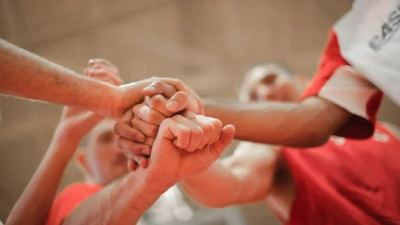Kimi no Na Wa (Your Name) is a technically gorgeous and charming movie that highlights the beauty of Japan, with an intriguing premise that is a sort of spiritual (and literally
. It is let down, however, by the weaknesses in its storytelling and some key plotholes that I found were too immersion-breaking.

There is no doubt Makoto Shinkai’s work is one of the most technically brilliant of all the Japanese animators I’ve ever watched. The utter eye for detail with the touch of shoujo anime hyperbole is designed to maximise the beauty of every frame. The flares of sunlight, the
Kimi No Na Wa 君の名は
, glistening of surfaces, the landscape shots and the use of music all combine to make a visual spectacle of a film that is full of fluid movement. The memory sequence and the change in animation style was probably one of my favourite parts, and the entire soundtrack worked well with the film.
Like many recent Japanese movies (Mamoru Hosada’s The Boy and the Beast comes to mind), one of the themes is the fundamental tension between the relentless pace of crowded, modern Tokyo and the idyllic, natural surroundings of the countryside, holding onto the last remnants of
There is a fundamental anxiety in small towns, especially its struggle to keep its children after graduation. Initially, I thought the movie was going to delve deeper into this and play on the contrast between Mitsuha and Taki’s wildly different lives or the crisis of identity that might accompany their continual body switching. That might have been a more subtle movie, an exploration of humanity and identity that would have been quieter but, if done well, very profound.
Kimi No Na Wa (your Name) Summary And Review
Instead, Makoto Shinkai goes for the sweeping drama and grandeur, perhaps prompted by the feature scale of the film, taking the viewer on a whirlwind through the fragility of lives, regret and the red string of fate in time, shifting the tone, scale and stakes of the movie into high gear at the start of the second act.
The key problem I found in the film is the shaky foundation in the central relationship and the role of technology in the film. This is not an uncommon problem in a lot of Japanese movies and in Shinkai’s work in particular – he’s quite traditional and nostalgic about his characters and settings and I think it has to do with how areas of Japan have been comparatively slow to transform and catch up to the modern age – I vividly remember being surprised at how the computers in a city high school were still running Windows 98 when I visited Japan in 2008 – but I think it detracts from the immersion of the movie here.

Though I adored the charming effervescent humour of the first arc in the body switching, and the introduction to Mitsuha and Taki’s lives, the process of establishing a romantic relationship between Mitsuha and Taki was shaky at best. Makoto Shinkai holds out on a face-to-face meeting for dramatic purposes, which I understand, but I could not stop wondering how, in the age of smartphones, they don’t
Movie Review Of Kimi No Na Wa (your Name)
Each other or find out each other’s full names or Mitsuha’s town (don’t they have signs?). It irked me the explanation seemed to just be ‘because the second arc has to happen’, even if any ordinary person would have found out that information so over the significant period they were switching.
Shinkai implies they slowly fell for each other during this period and I do assume more conversation went on in the ‘gaps’ between each montage clip, but I did wish there had been more focus on how Mitsuha and Taki communicated with each other as ‘themselves’ instead of simply writing updates on how they were living the other’s lives. There was a lot of opportunity to explore the function of technology in ‘long distance’ relationships (even one as strange as theirs), or at least address how their relationship dynamic changed.

The movie takes a bit of a confusing turn with the time travel elements but it finds firmer footing in the third act when Taki finds himself back in Mitsuha’s body and to the night of the comet strike. The process of the two finding each other is done very well if you ignore the relationship establishment question mark and just accept Taki and Mitsuha as the star-crossed romance that Shinkai wants his audience to see them as. The third act hits wonderfully dramatic and emotional beats that are all designed to highlight the animation and fantastical natural settings. Yes, the whole ‘schoolkids blowing up a power station as fake!terrorists to evacuate the town’ does come across as a bit far-fetched (can…middle school kids casually acquire dynamite like that?) but then it also made me wonder how
Movie Review: Kimi No Na Wa
Would convince an entire town to evacuate from a scheduled festival within an afternoon and it starts to seem like a more logical plan.
However, the movie suffers by not clearly setting up the ‘rules’ of the magic in the universe, making the memory loss and time skip feel arbitrary only for the reunion scene. For better or worse, the music and drama of the animation do a powerful job of managing to sweep aside those lingering final questions as they culminate in an emotional and thankfully

Overall, I’m still happy this film is getting the accolades and buzz, even it’s far from matching Spirited Away from a storytelling point of view. To me, 5cm per second remains the stronger of Shinkai’s work but I seem to be in the minority here.I’ve never quite understood people who look down on anime as a ‘children’s’ medium and if it allows a couple more people to give Makoto Shinkai’s work and animated films a chance, all the more power to it.Overtaking Hayao Miyazaki’s Spirited Away as the highest grossing Japanese animated film to date is Makoto Shinkai’s latest film Kimi no Na wa or also known as Your Name, a fun and emotional teen body swap story between a city boy in Tokyo and a country girl in the remote fictional town of Itomori.
The Intricacies Of Makoto Shinkai’s Newly Coveted Kimi No Na Wa (your Name)
Mitsuha (Mone Kamishiraishi) is school girl living in Itomori, a remote town in the Hida mountains, who spends her days going to school and tending to the family shrine. She’s bored and hates living in a small town in the middle of nowhere, exclaiming to the sky to make her a “handsome Tokyo boy in her next life”. Taki (Ryunosuke Kamiki) is a city boy living in Tokyo who spends his time between school, cafes and working at an Italian restaurant, while also struggling to make anything of his crush on his work colleague Okudera (Masami Nagasawa). At some point in time (as the film never makes it clear as to when) Mitsuha and Taki start to body swap on different days every week. At first, they assume the experiences to be dreams but they soon realise the reality of the situation when friends and family speak of how they have been acting strangely recently. The two begin to communicate through messages left in notepads, on their arms and faces and in the phones. While in Mitsuha’s body Taki increases her popularity in school while also experiencing the beauty of the town of Itomori, while when Mitsuha is in Taki’s body she indulges in extravagant food and desserts while getting things going between Taki and Okudera. They learn about each other through these experiences as the film builds up to the event of the comet passing overhead in the night sky.
In English) received heaps of praise as one of the best animated films to ever come out of Japan. Upon the release of the film, Makoto Shinkai has been hailed as the ‘next Miyazaki’. However, this shouldn’t be taken as Shinkai becoming a copy of the famous director as his own style of using gorgeous looking animation shines through in

Visually the film is stunning, so much so that most frames of the film could be taken out and hung up on the wall like a painting, especially in scenes showing the beauty of Itomori. When Taki stares in awe at the lake surrounded by the Hida mountains, the beauty and detail of the scenery allow us to stare in awe with him. It’s not just the scenery in the countryside that holds this amount of detail either; we also experience a different kind of beauty in the bright and lively city of Tokyo, watching the city lights dim as the sun rises between the skyscrapers. However, the most stunning shots in the film can be seen when the comet flies overhead as the night sky is filled with colour. Seeing all of this on the big screen will leave you speechless. This film is visually stunning in more ways than just the scenery though, as can be seen in the animation of the kuchikamizake ritual performed at the shrine by Mitsuha and her younger sister Yotsuha (Kanon Tani), who I should mention is one of the most adored members of the cast for those who have seen the film.





